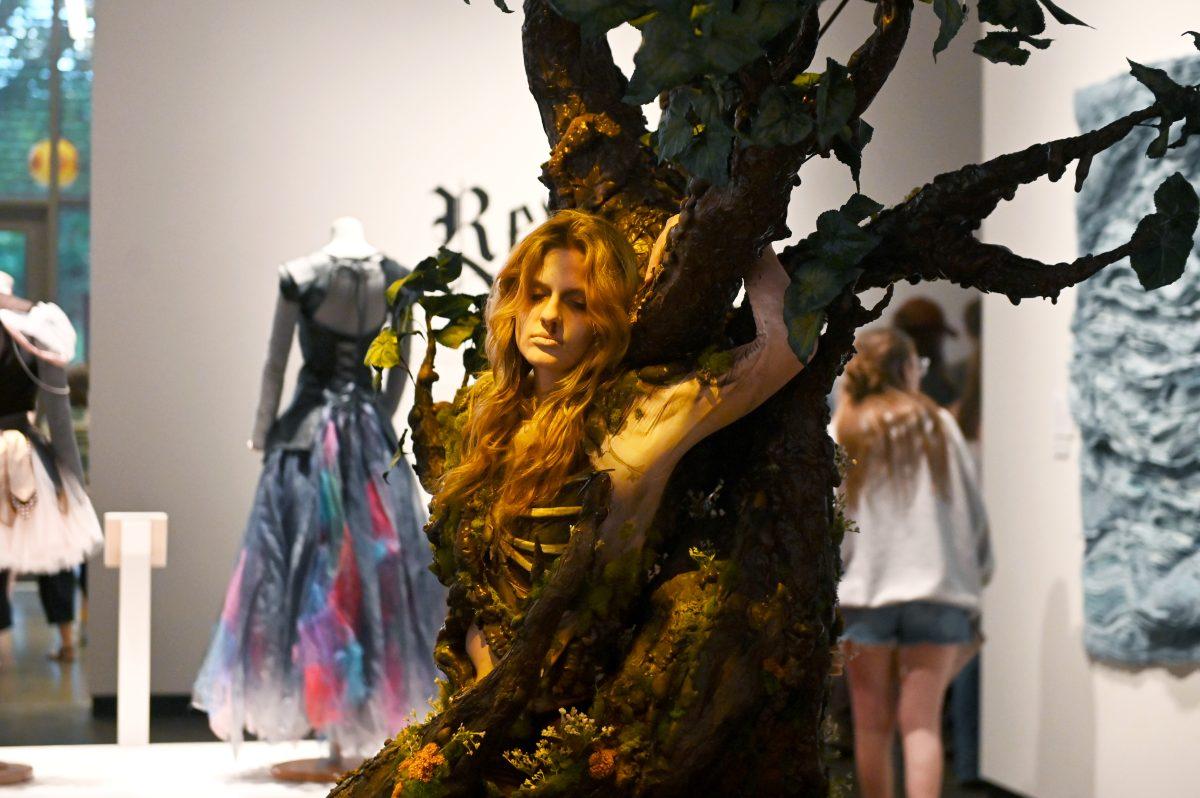Modernism at its core is all about the consumer. Emphasizing affordability and function, the movement met the need for cost-effective housing which became crucial to returning World War II veterans and their budding families. Not only did Modernism provide a simplistic approach to design, specifically tailored to the needs of the consumer, but it also proved itself practical in its ability to be mass produced.
Matt Gay, art preparator for the Gregg Museum, said, “not only was [Modernism] well-designed for the human being; it was aesthetically pleasing and simple.”
Gay said a year or so ago the museum had a hole in their exhibition schedule for the foundations gallery, so the staff was split into two different groups and each had to come up with exhibition ideas.
“Ended up whoever’s idea we thought worked better would be the one we would do. My/our idea was more feasible right now, so I was charged with being curator of exhibit,” Gay said. “We had the stuff in the collection, it’s very pertinent to NCSU because of the College of Design and how that really affected Raleigh and the southeast as a whole. A lot of people really find that time period, in terms of design, interesting. People either love it or hate it.”
Modernist design was so popular due to its accessibility and attention to people’s needs, Gay said.
“It’s very different from what had been traditionally done in the past. It was sort of a new era and I think people liked the simplicity and that it could be mass produced. The fact that it was easily available to a lot of people if you had the money,” Gay said. “The past traditions ruled over how design was made and in terms of modern design that didn’t really hold true anymore.”
Modernism has had a leading effect on contemporary design in that it set a new standard for principles of form-following function and aesthetics. Gay added, “Modernism was the beginning stages of this new design movement; contemporary design has polished and perfected Modernism.”
Modernism can be credited not only as a major influence in contemporary design, but also for its part in shaping the N.C. State College of Design. The exhibition features elements of N.C. State history in its display of works by past NCSU professors, including Henry Matsumoto, George Matsumoto, Duncan Stuart, James Fitzgibbons and Edward “Terry” Waugh.
As a prominent factor in the early days of the University’s College of Design, architecture has a particularly special history shown in the exhibit. When Chancellor Harrelson was given funding from the G.I. Bill, he recruited Kamphoefner from Oklahoma State University along with this team of four architects: Stuart, Fitsgibbons, Waugh and Matsumoto.
The exhibit features aspects of modernism as seen not only in architecture, but also in furniture and textiles.
Some key pieces in the exhibition, according to Gay, are George Nakashima pieces.
“Nakashima was a master craftsman of Japanese carpentry and his design in terms of modern design is more the organic side than the manufacturing side,” Gay said.
In his time, George Nakashima was a renowned furniture designer who can be celebrated for his mastery of Japanese woodworking.
“In Two-Plank Dining Room Table With Turned Legs Nakashima leaves the free form edges to show you how nature shaped the wood instead of how man shaped the wood,” Gay said.
When you walk into the exhibit the pieces are arranged as if they were in real rooms, with modern accessories and paintings. On one couch sits a set of two pillows featuring vintage Marimekko fabric.
Armi Ratia’s company, Marimekko, began in 1951 with a collection of dresses made from fabric printed in her husband’s oilcloth factory. Ratia’s designs became popular in 1960 when Jackie Kennedy wore several of the brand’s dresses during her husband’s presidential campaign.
The exhibit’s retro vibe, array of pieces and importance in the history of design make it well worth the time to visit. On display from now until the end of the semester, there will be a reception Sept. 9 from 6 p.m. to 8 p.m. in the museum where students are welcome to attend and enjoy free food and delightful design.




